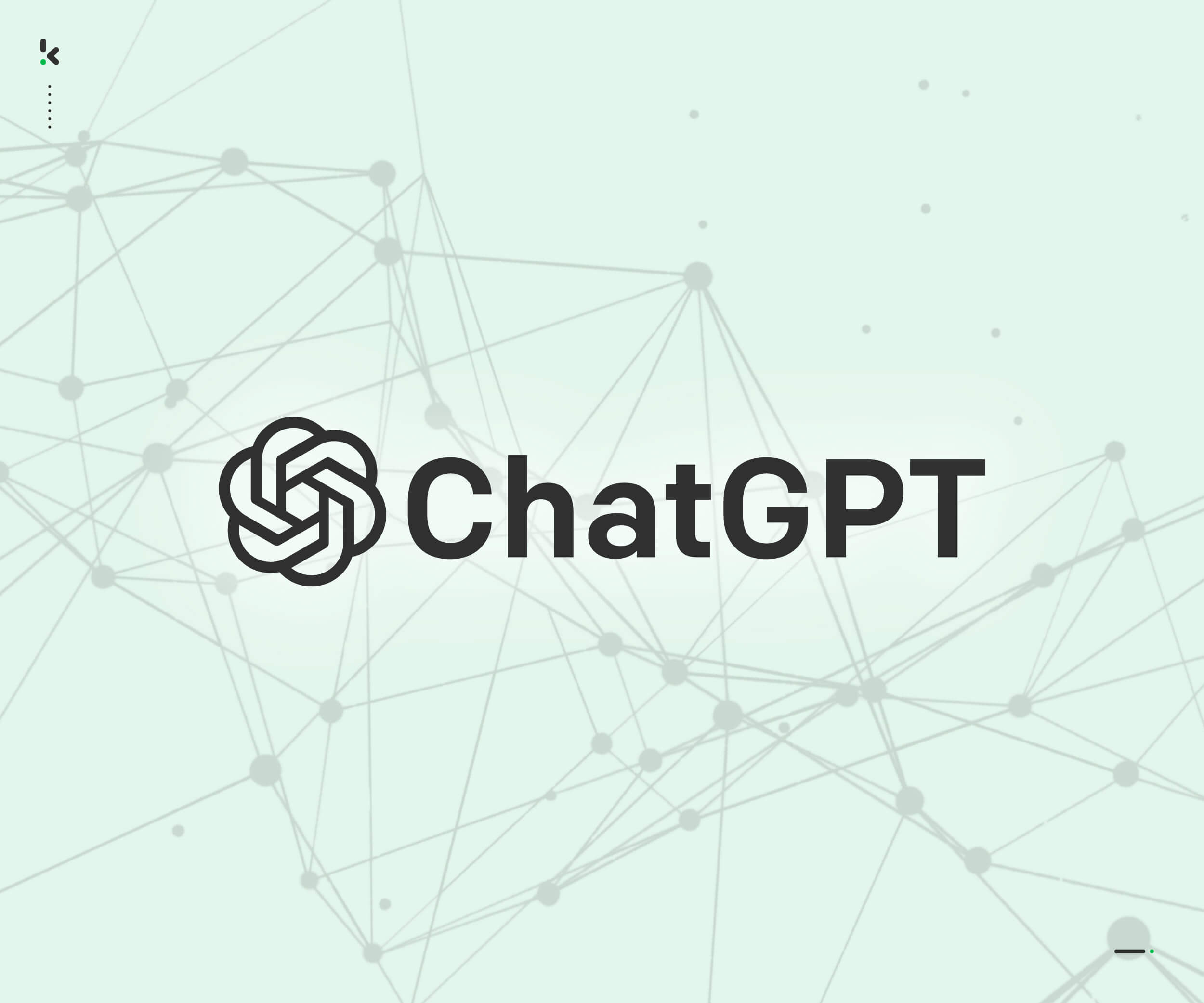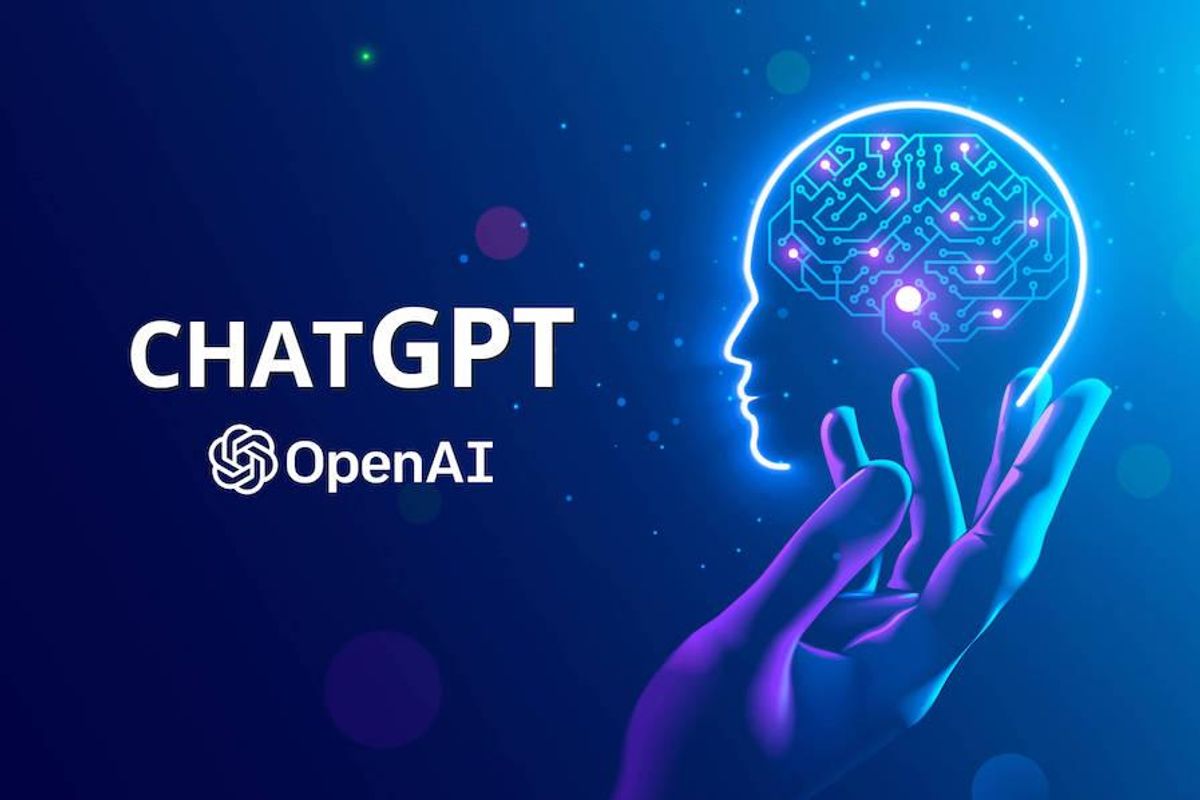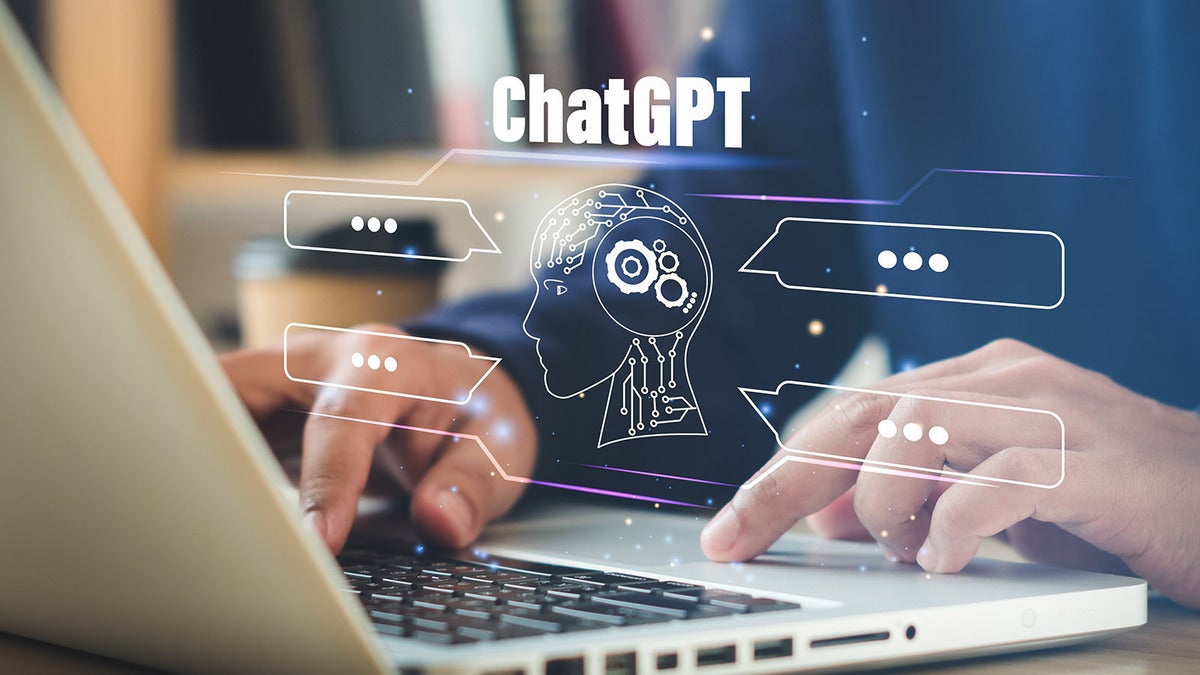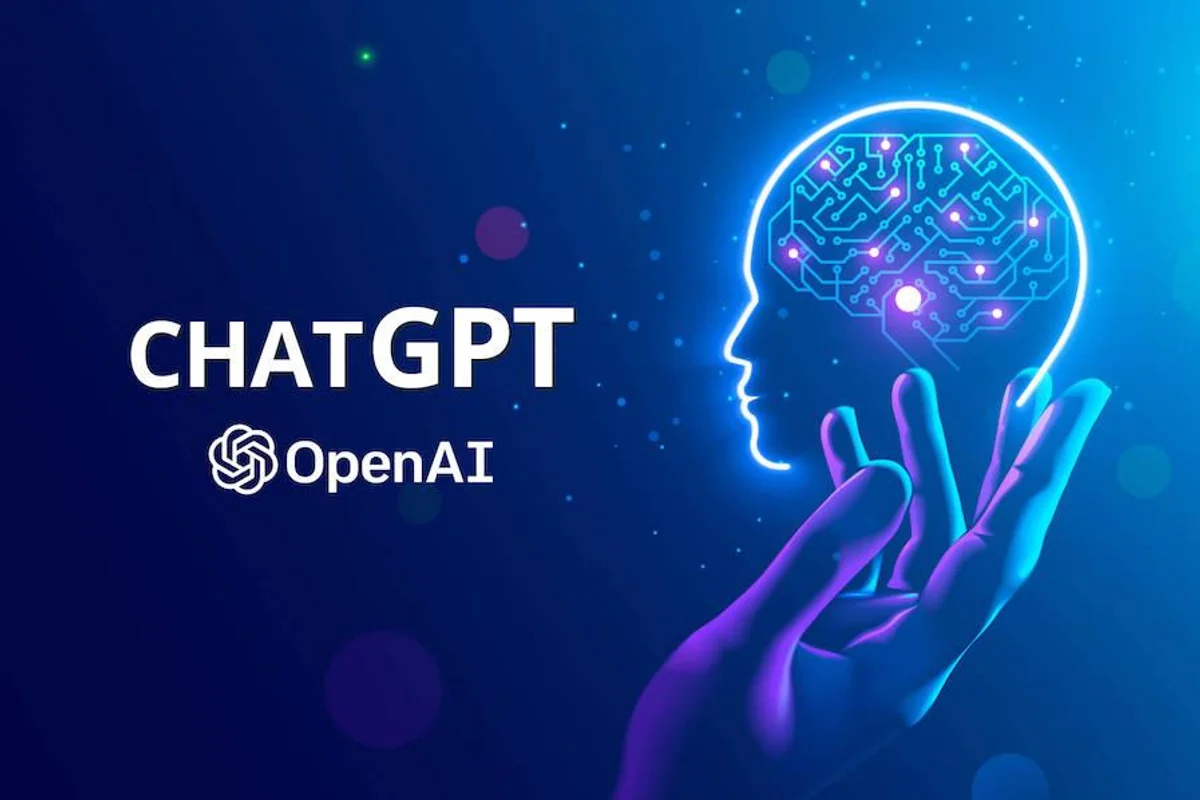Dive into the world of ChatGPT, a revolutionary language model developed by OpenAI. Explore the history of ChatGPT and its evolution, from earlier versions to the advanced GPT-3.5 architecture. Understand the limitations of ChatGPT, including its potential biases and challenges in handling specific topics. Uncover how ChatGPT works, leveraging machine learning and natural language processing techniques to generate human-like responses. Discover intriguing facts about ChatGPT, such as its training process and vast knowledge base. Get answers to frequently asked questions about ChatGPT’s capabilities, applications, and its impact on various industries.
ChatGPT is a state-of-the-art AI language model developed by OpenAI, one of the leading artificial intelligence research institutes in the world. As a language model, ChatGPT is designed to understand natural language input from humans and generate responses that are both informative and contextually appropriate.
With its sophisticated natural language processing capabilities, ChatGPT can answer a wide range of questions on various topics, including science, technology, history, and more. It can also engage in intelligent, natural-sounding conversations with users, making it a valuable tool for businesses, educators, and individuals alike.

The development of ChatGPT builds upon previous breakthroughs in the field of natural language processing, including the introduction of the GPT architecture by OpenAI in 2018. Since then, OpenAI has continued to refine and improve upon the GPT architecture, culminating in the release of ChatGPT , one of the most advanced language models available today.
ChatGPT represents a significant step forward in the development of conversational AI, with the potential to revolutionize the way we interact with computers and other digital devices. In this article, we’ll explore the technology behind ChatGPT in more detail, including its architecture, applications, and limitations.
Whether you’re a business looking to improve customer service, an educator seeking to engage students in a new way, or simply curious about the latest developments in artificial intelligence, ChatGPT is an exciting and groundbreaking technology that’s worth exploring further.
History of ChatGPT Language Models
The development of GPT (Generative Pre-trained Transformer) language models represents a major breakthrough in the field of natural language processing (NLP). GPT language models are based on the transformer architecture, which allows for the creation of large-scale language models that can generate high-quality text in a variety of contexts.
The first version of GPT, GPT-1, was introduced by OpenAI in 2018. It had 117 million parameters and was trained on a massive dataset of text from the internet. This dataset included everything from news articles to social media posts and allowed GPT-1 to learn how to generate text that was similar in style and tone to the text it had been trained on.
GPT-1 was a significant development in the field of NLP, as it demonstrated the potential of large-scale language models to generate high-quality text. However, it was quickly surpassed by later versions of GPT, which were able to generate even more realistic and contextually appropriate text.
In 2019, OpenAI released GPT-2, which was a significant improvement over GPT-1. GPT-2 had 1.5 billion parameters, which allowed it to generate text that was even more realistic and contextually appropriate than its predecessor. However, due to concerns about the potential misuse of such a powerful language model, OpenAI initially only released a smaller version of GPT-2 to the public.
In 2020, OpenAI released GPT-3, which was the largest and most powerful language model ever created, with a staggering 175 billion parameters. GPT-3 was able to generate text that was almost indistinguishable from text written by a human, and could even perform tasks such as translation and summarization.
The development of GPT language models has been a major milestone in the field of NLP, as it has shown the potential of large-scale language models to generate high-quality text in a variety of contexts. GPT language models have numerous applications, including natural language understanding, chatbots, and text generation.
However, there are also concerns about the potential misuse of such powerful language models, particularly in the context of fake news and disinformation. As such, it will be important for researchers and policymakers to carefully consider the potential risks and benefits of GPT language models as they continue to develop and evolve.
The Architecture of ChatGPT
ChatGPT is a state-of-the-art natural language processing model that is based on the GPT architecture developed by OpenAI. Like other GPT models, ChatGPT is a transformer-based language model that is capable of generating natural-sounding text in response to user input.
At its core, the architecture of ChatGPT consists of multiple transformer blocks that are stacked on top of each other. Each transformer block consists of two main components: a multi-head self-attention mechanism and a feedforward neural network.
The multi-head self-attention mechanism allows ChatGPT to attend to different parts of the input text in parallel, enabling it to capture complex patterns and relationships within the text. The feedforward neural network, on the other hand, processes the information extracted from the multi-head self-attention mechanism and produces the final output.
One of the key features of ChatGPT’s architecture is its ability to leverage unsupervised learning. In other words, the model is pre-trained on a large corpus of text data without any explicit supervision, allowing it to learn the statistical patterns and relationships that exist within natural language.
Once pre-trained, the model can be fine-tuned on specific tasks, such as question answering or text generation. This fine-tuning process involves providing the model with task-specific input and output data and adjusting the parameters of the model to minimize the difference between the predicted output and the actual output.
Another important aspect of ChatGPT ‘s architecture is its use of positional embeddings. These embeddings allow the model to keep track of the position of each word in the input text, which is crucial for capturing the sequential nature of language.
In addition to its core transformer-based architecture, ChatGPT also includes several other features that help to improve its performance. For example, the model includes a mechanism for generating context-specific embeddings that are tailored to the specific context in which the text is being generated. It also includes a mechanism for incorporating external knowledge, such as knowledge graphs or ontologies, into the text generation process.

Overall, the architecture of ChatGPT is highly sophisticated and has been optimized to generate high-quality text in a variety of contexts. Its use of transformer blocks and unsupervised learning allows it to capture complex patterns and relationships within natural language, while its use of positional embeddings helps to ensure that the model can generate text that is both contextually appropriate and grammatically correct.
How ChatGPT Works
At its core, ChatGPT works by processing input text and generating output text based on that input. This process is broken down into several steps, which I’ll outline below:
- Input Processing: When a user inputs text into ChatGPT , it first goes through a process of tokenization. Tokenization involves breaking up the input text into smaller units, called tokens, which represent individual words or groups of words. These tokens are then mapped to numerical representations using an embedding matrix.
- Encoding: Once the input text has been tokenized and mapped to numerical representations, it is passed through the transformer blocks in ChatGPT . These transformer blocks encode the input text, processing it in parallel and creating a hidden representation of the input text.
- Contextualization: After the input text has been encoded, ChatGPT uses this hidden representation to contextualize the text. This means that the model takes into account the surrounding context of the input text, including previous conversation history, and uses this information to generate a more appropriate response.
- Decoding: Once the input text has been contextualized, ChatGPT uses a decoder to generate an output response. The decoder uses the hidden representation of the input text to predict the next token in the response sequence, and continues to generate tokens until the desired response length has been reached.
- Output Generation: Once the decoder has generated a sequence of tokens, these tokens are converted back into natural language text and presented to the user as a response.
Throughout this process, ChatGPT uses a process called attention to determine which parts of the input text are most important for generating the output response. Attention allows the model to focus on specific words or phrases in the input text, and helps to ensure that the output response is both informative and appropriate for the context of the conversation.
ChatGPT Applications and Use Cases
here are some ChatGPT applications and use cases:
- Customer Service: ChatGPT can be used to provide automated customer service to users. It can answer frequently asked questions, provide information on products or services, and help users troubleshoot issues.
- Education: ChatGPT can be used to create educational chatbots that help students learn in a more interactive and engaging way. For example, a language learning chatbot could help students practice their speaking and listening skills by engaging in conversation.
- Personal Assistants: ChatGPT can be used to create personal assistants that help users with tasks such as scheduling, reminders, and managing their to-do lists. These personal assistants can be integrated into messaging apps, allowing users to interact with them using natural language.
- News and Media: ChatGPT can be used to generate news articles and summaries based on a user’s interests. It can also be used to create personalized news feeds that are tailored to each user’s preferences.
- Mental Health: ChatGPT can be used to create mental health chatbots that provide support and guidance to individuals struggling with mental health issues. These chatbots can provide information on mental health resources, help users identify symptoms, and provide coping strategies.
- Marketing: ChatGPT can be used to create chatbots that engage with users and provide personalized product recommendations. This can help businesses increase sales and improve customer engagement.
- Language Translation: ChatGPT can be used to create language translation chatbots that help users communicate with people who speak different languages. These chatbots can translate text in real-time and help bridge language barriers.
- Entertainment: ChatGPT can be used to create chatbots that engage users in entertaining conversations. For example, a trivia chatbot could ask users questions and provide information on a variety of topics.
ChatGPT has a wide range of applications and use cases, and is a valuable tool for businesses, educators, and individuals looking to engage with their audience in a more personalized and engaging way. As natural language processing technology continues to advance, we can expect to see even more innovative uses for ChatGPT in the future.
Limitations of ChatGPT
While ChatGPT is an impressive language model with many potential applications, it is not without its limitations. Here are some of the most notable limitations of ChatGPT :
- Limited Knowledge Base: While ChatGPThas been trained on a massive dataset of text from the internet, it still has limitations in terms of its knowledge base. It may struggle to answer questions or respond to prompts that fall outside of its training data, or that require knowledge that is not well-represented in that data.
- Lack of Common SenseChatGPT: ChatGPT may struggle to understand and generate responses that are based on common sense knowledge. For example, if asked “Can a dog fly?”,ChatGPT may generate a response that is factually correct but not contextually appropriate, such as “No, dogs are not capable of flight”. This is because ChatGPT lacks the common sense knowledge that would allow it to recognize that the question is meant as a joke or a rhetorical device.
- Inability to Reason: ChatGPT is not capable of reasoning in the way that humans do. While it can generate responses based on patterns in its training data, it does not have the ability to evaluate evidence or draw logical conclusions in the way that humans can.
- Bias: Like all language models, ChatGPT is susceptible to bias in its training data. If the data it is trained on contains biases, ChatGPT may inadvertently reproduce those biases in its responses. This can be particularly problematic in applications such as hiring or loan approval, where biased responses could lead to discrimination.
- Lack of Emotion and Contextual Understanding: While ChatGPT is capable of generating text that is contextually appropriate, it lacks the emotional intelligence and contextual understanding of humans. This means that it may struggle to pick up on the nuances of a conversation or understand the emotional state of the person it is communicating with.
- Limited Multilingual Capabilities: While ChatGPT is capable of generating text in multiple languages, its capabilities in this area are still somewhat limited. It may struggle to accurately translate idiomatic expressions or generate text in languages with more complex grammatical structures.
- Security and Privacy Concerns: As with any AI technology that processes large amounts of data, there are concerns about the security and privacy implications of ChatGPT. If the model were to fall into the wrong hands, it could be used to generate fake news or other forms of disinformation, or to gain unauthorized access to sensitive data.
Despite these limitations,ChatGPT is still a highly impressive language model with many potential applications. As researchers continue to refine the technology and develop new approaches to natural language processing, it is likely that many of these limitations will be addressed in the coming years.
Future of ChatGPT and AI Language Models
The future of AI language models, including ChatGPT, is extremely promising. As researchers continue to develop new techniques and algorithms for natural language processing, these models are becoming increasingly sophisticated and capable of handling more complex tasks.
One area where AI language models are likely to see significant growth in the coming years is in their ability to generate more nuanced and contextually appropriate responses. This could involve incorporating more advanced techniques for understanding the emotional state of the person they are communicating with, or developing more sophisticated models for understanding the broader context of a conversation.
Another area where AI language models are likely to see significant growth is in their ability to interact with humans in a more natural and intuitive way. This could involve developing new interfaces that make it easier for users to communicate with AI language models, or developing new techniques for generating more human-like responses.

AI language models are also likely to play an increasingly important role in areas such as customer service, healthcare, and education. For example, AI language models could be used to provide personalized healthcare recommendations based on a patient’s symptoms and medical history, or to provide educational resources tailored to the needs and interests of individual students.
there are also concerns about the future of AI language models, particularly with regards to issues such as bias and privacy. As these models become more sophisticated and more widely used, it will be important to ensure that they are developed and deployed in a responsible and ethical manner.
Overall, the future of ChatGPT and AI language models is extremely bright. As researchers continue to push the boundaries of what these models are capable of, they will play an increasingly important role in our lives, helping us to communicate more effectively with each other and to navigate the complexities of the world around us.
ChatGPT is an advanced AI language model that has the potential to revolutionize the way we interact with technology and communicate with each other. While it has its limitations, including its lack of emotional intelligence, common sense, and creativity, its strengths lie in its ability to generate responses based on patterns in text, and its potential to become increasingly sophisticated as researchers continue to develop new techniques and algorithms for natural language processing.
The future of ChatGPT and other AI language models is extremely promising, with potential applications in areas such as customer service, healthcare, education, and more. However, as with any emerging technology, it is important to ensure that AI language models are developed and deployed in a responsible and ethical manner, taking into account issues such as bias and privacy.
As researchers continue to refine the technology and address its limitations, AI language models are likely to play an increasingly important role in our lives, helping us to communicate more effectively with each other and to navigate the complexities of the world around us. The possibilities are truly endless, and it will be exciting to see where the technology takes us in the years to come.
ChatGPT related Facts
Here are some interesting facts related to ChatGPT:
- ChatGPT is an AI language model developed by OpenAI, an AI research organization based in San Francisco, California.
- The “GPT” in ChatGPT stands for “Generative Pre-trained Transformer”, which refers to the type of neural network architecture used to train the model.
- ChatGPT was released in June 2020, and is based on the larger GPT-3 model, which contains over 175 billion parameters.
- ChatGPT has been trained on a vast amount of text data, including books, articles, and websites, which allows it to generate human-like responses to a wide range of prompts.
- ChatGPT has been used for a variety of applications, including chatbots, language translation, and even generating computer code.
- ChatGPT has been shown to be capable of passing the Turing test, a measure of a machine’s ability to exhibit human-like intelligence in a conversation.
- The development of ChatGPT has raised concerns about the potential misuse of AI language models, including the spread of disinformation and the creation of realistic but fake content.
- OpenAI has made the decision to keep the largest version of GPT-3, which contains over 175 billion parameters, exclusive to its own research purposes and selected partners, in order to prevent it from being used for malicious purposes.
- ChatGPT has been used in various applications, including as a tool for text completion, language translation, and even in creative writing.
- ChatGPT’s capabilities continue to expand as new techniques and algorithms for natural language processing are developed, and its potential applications are becoming increasingly diverse and exciting.
ChatGPT related FAQs
What is ChatGPT?
ChatGPT is an AI language model developed by OpenAI, which can generate human-like responses to a wide range of prompts.
How does ChatGPT work?
ChatGPT works by analyzing large amounts of text data and using that information to generate responses to text prompts. It uses a type of neural network architecture called a Transformer to generate these responses.
What can ChatGPT be used for?
ChatGPT can be used for a variety of applications, including chatbots, language translation, and even generating computer code. It can also be used as a tool for text completion or creative writing.
What are the limitations of ChatGPT?
The limitations of ChatGPT include its lack of emotional intelligence, common sense, and creativity. It also has the potential to spread disinformation and create fake content.
How can ChatGPTbe used responsibly?
ChatGPT can be used responsibly by ensuring that it is developed and deployed in an ethical and responsible manner, taking into account issues such as bias and privacy. It is important to use ChatGPT for positive purposes and to prevent it from being used for malicious purposes.
Will ChatGPT continue to evolve?
Can we use ChatGPT for free?
Yes, there are some ways to use ChatGPT for free. OpenAI offers an API (Application Programming Interface) that allows developers to integrate ChatGPT into their own applications. This API offers a free tier, which allows for up to 100,000 requests per month. However, beyond that limit, there are usage fees. Additionally, there are also some online platforms that offer free access to ChatGPT for users to experiment with and test its capabilities, although the scope of access and features may be limited in such cases. It is important to note that while the basic access may be free, some features or services may require a paid subscription or purchase.
Who owns ChatGPT?
ChatGPT is owned by OpenAI, an artificial intelligence research organization based in San Francisco, California. OpenAI was founded in 2015 by a group of entrepreneurs and philanthropists, including Elon Musk, Sam Altman, Greg Brockman, Ilya Sutskever, and John Schulman. The organization aims to develop and promote friendly AI for the betterment of humanity, and is committed to ensuring that its research is used ethically and responsibly. While OpenAI owns ChatGPT, the organization has made efforts to make its technology accessible to others through its API and other platforms.
Can I use ChatGPT for commercial use?
Yes, ChatGPT can be used for commercial use, but it is important to note that there may be usage fees associated with it. OpenAI, the organization that owns ChatGPT, offers an API that allows developers to integrate ChatGPT into their own applications for commercial purposes. However, usage fees may be charged beyond a certain limit of requests per month. Additionally, there may be other licensing or legal requirements that must be followed depending on the specific application and context in which ChatGPT is being used. It is important to review and comply with OpenAI’s usage guidelines and terms of service, as well as any applicable laws and regulations, when using ChatGPT for commercial use.
Can I use ChatGPT on my website?
Yes, you can use ChatGPT on your website by integrating it through the OpenAI API. OpenAI offers a variety of tools and resources to help developers integrate ChatGPT into their websites or applications. This can allow you to provide your website visitors with a chatbot or virtual assistant that can answer their questions or provide information in a conversational way. It is important to note that there may be usage fees associated with using ChatGPT through the OpenAI API beyond a certain limit of requests per month, and you should review and comply with OpenAI’s usage guidelines and terms of service when using ChatGPT on your website.
